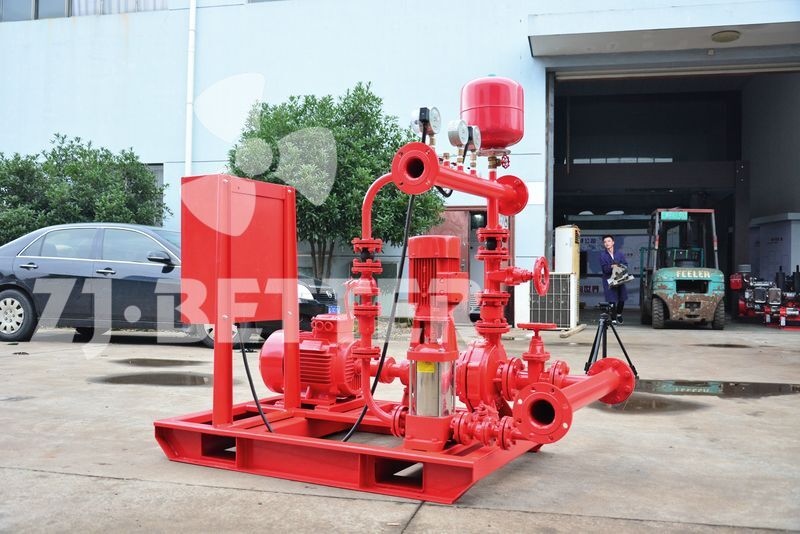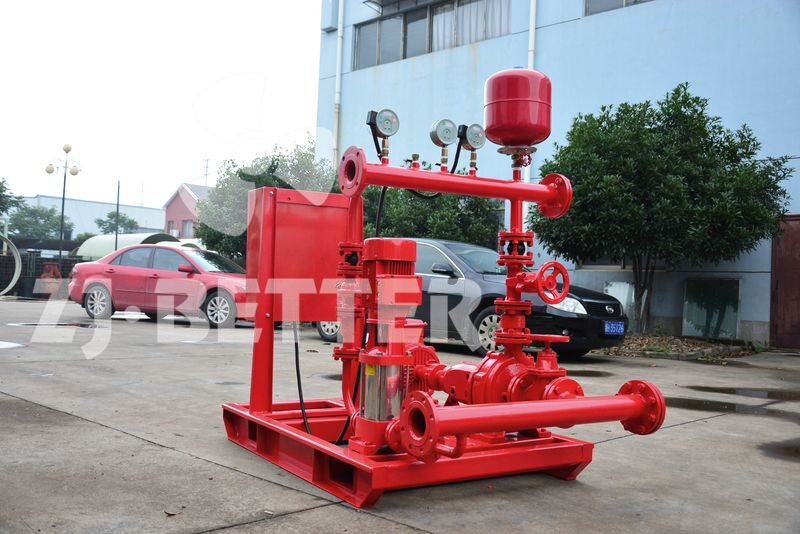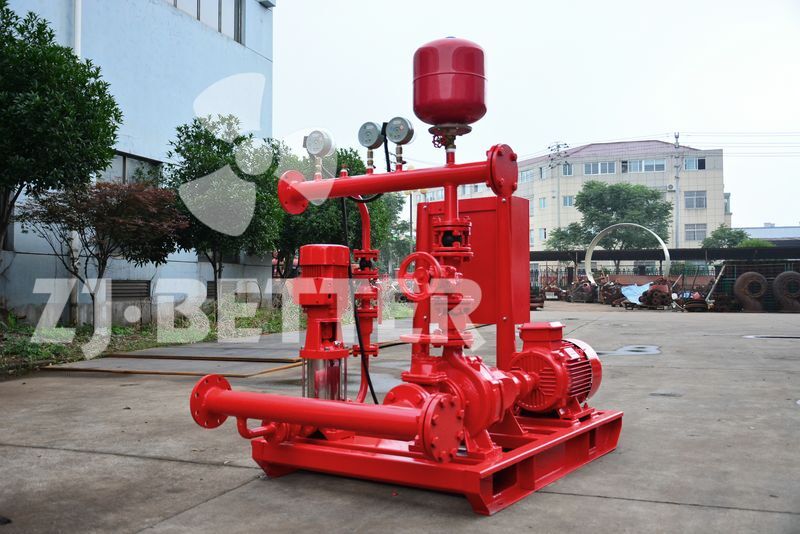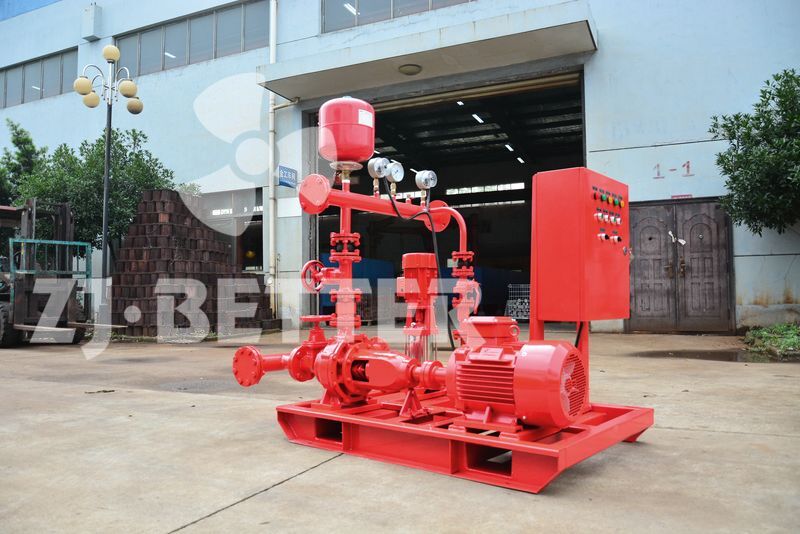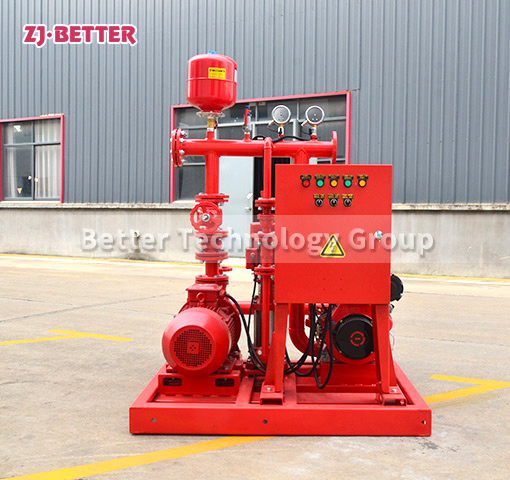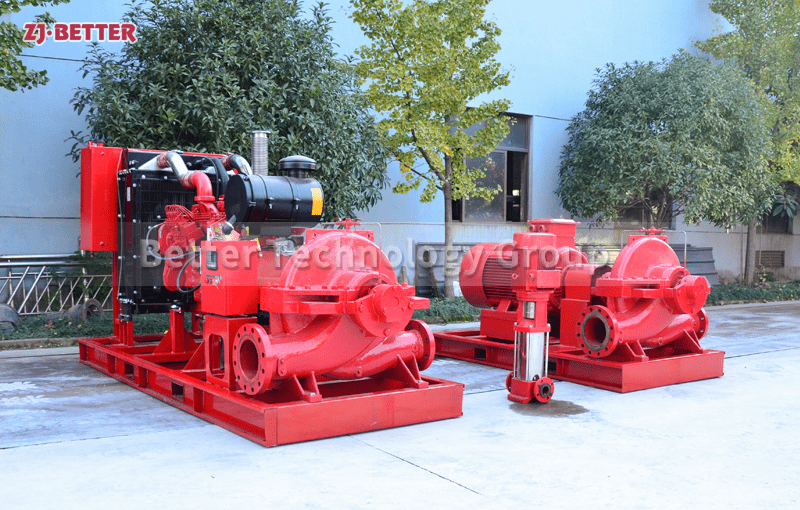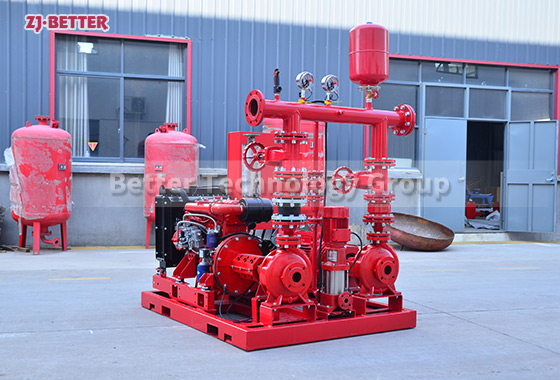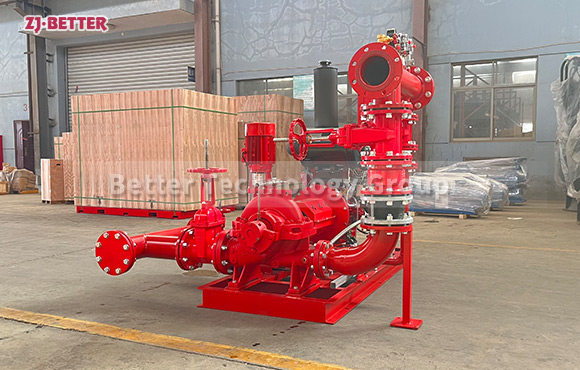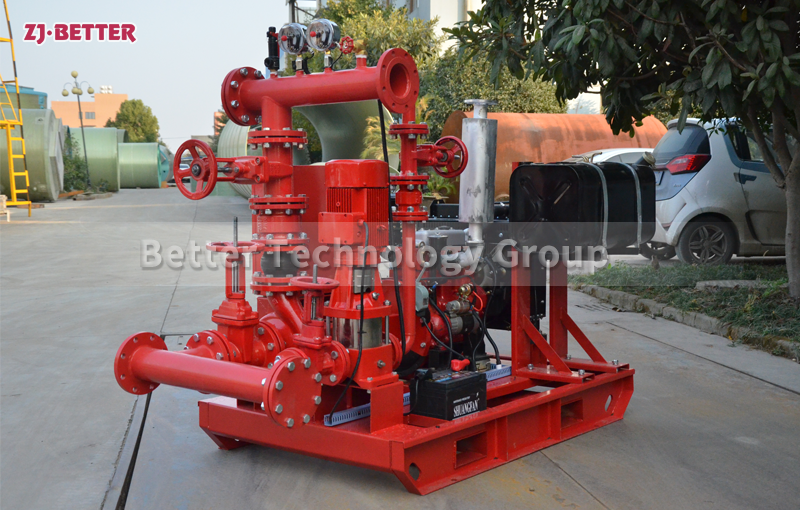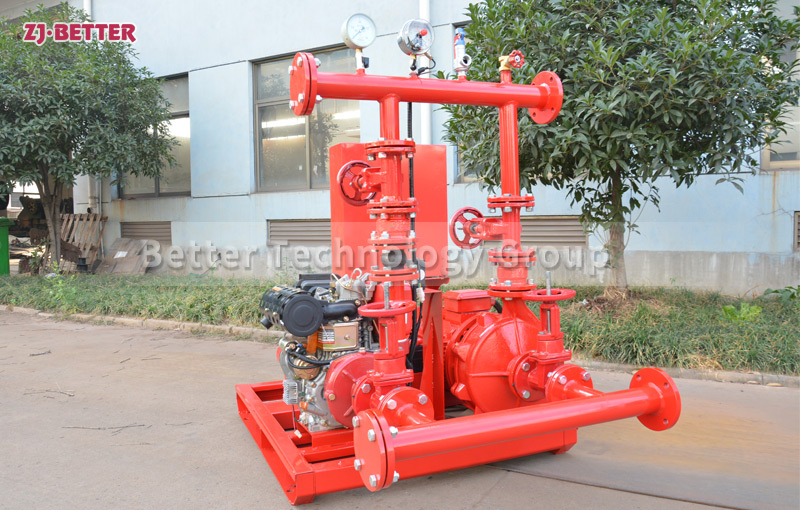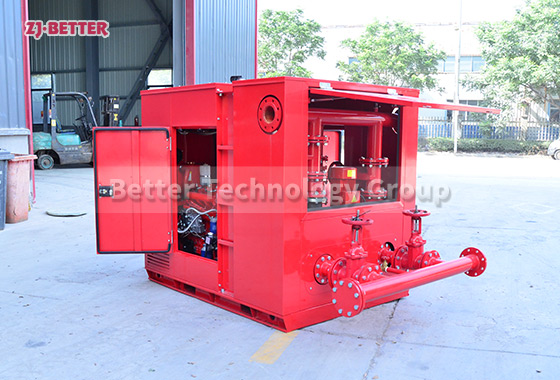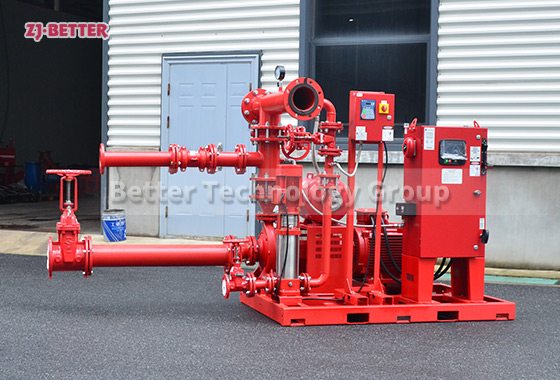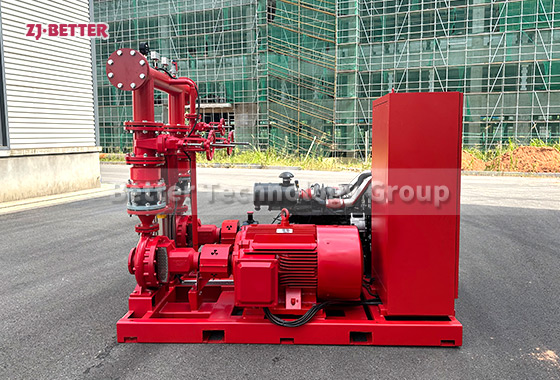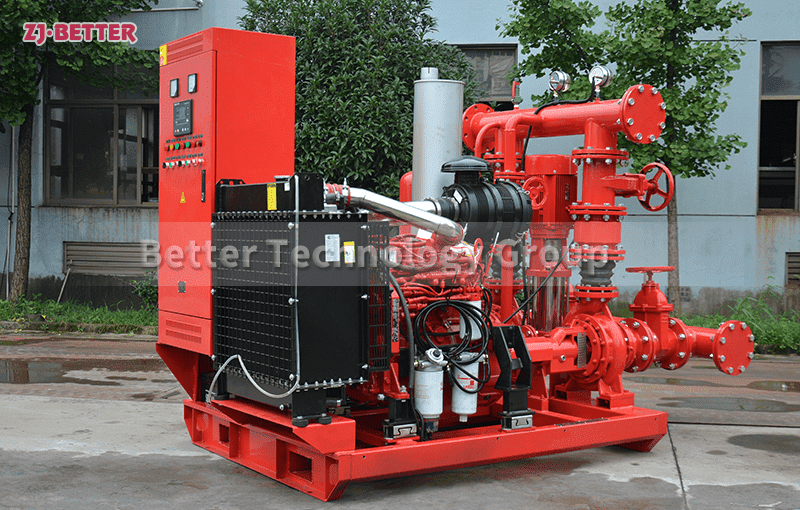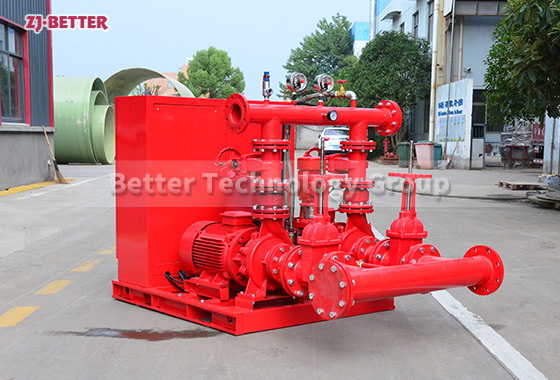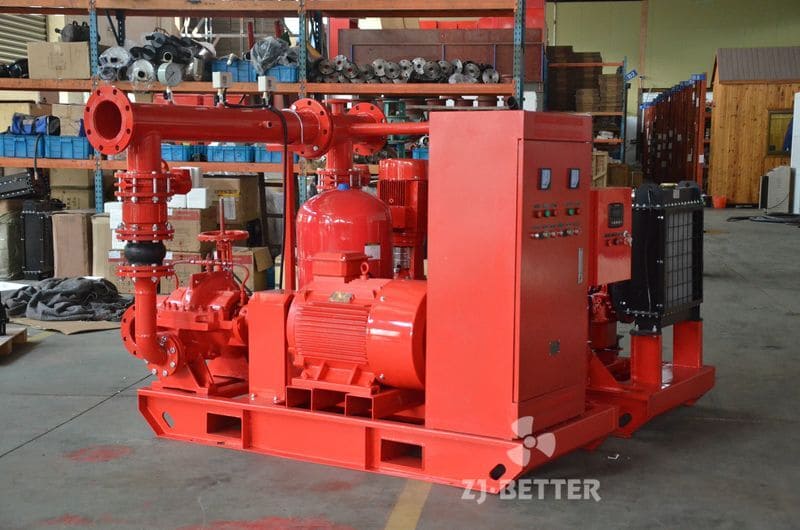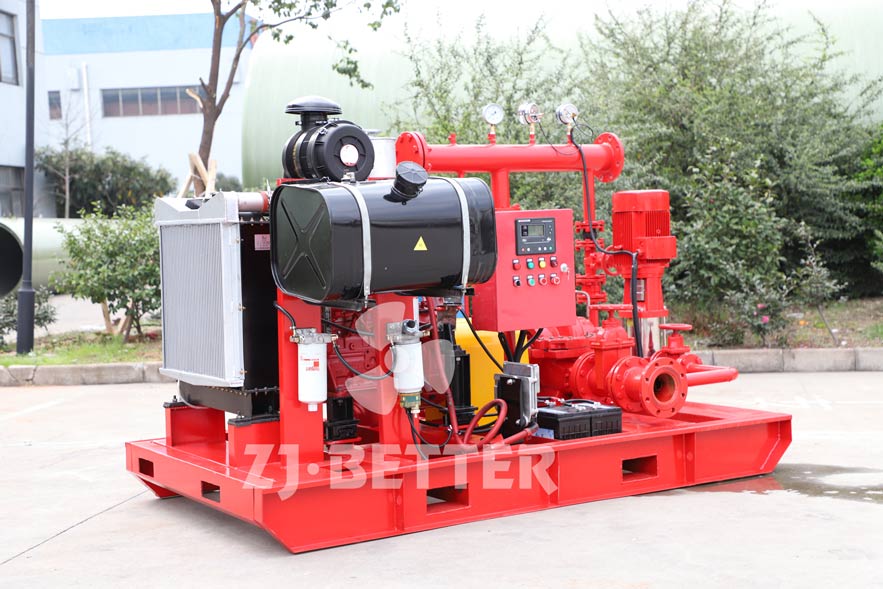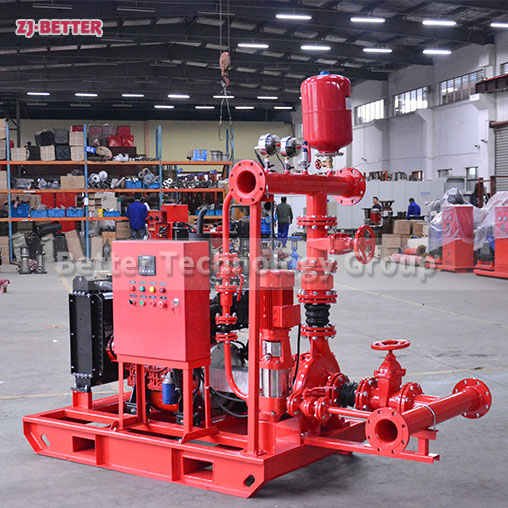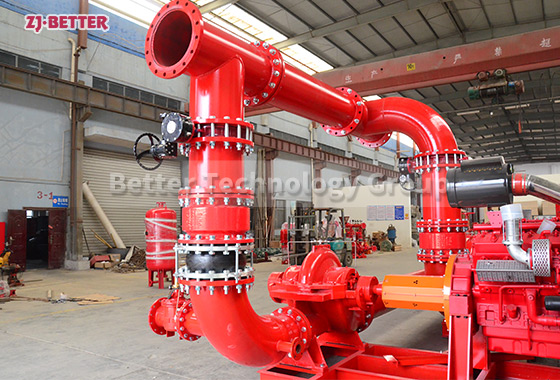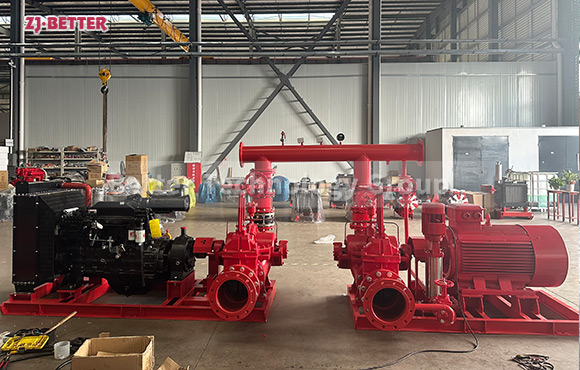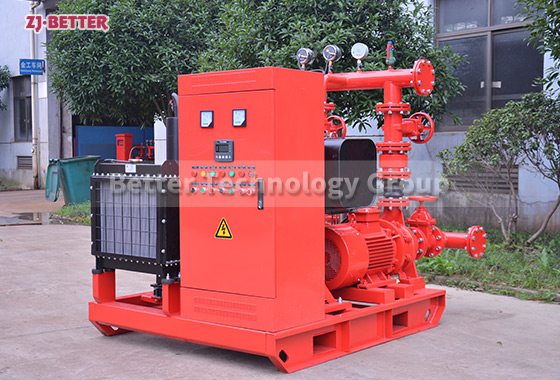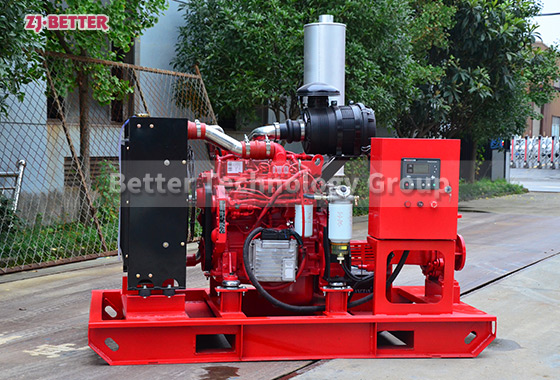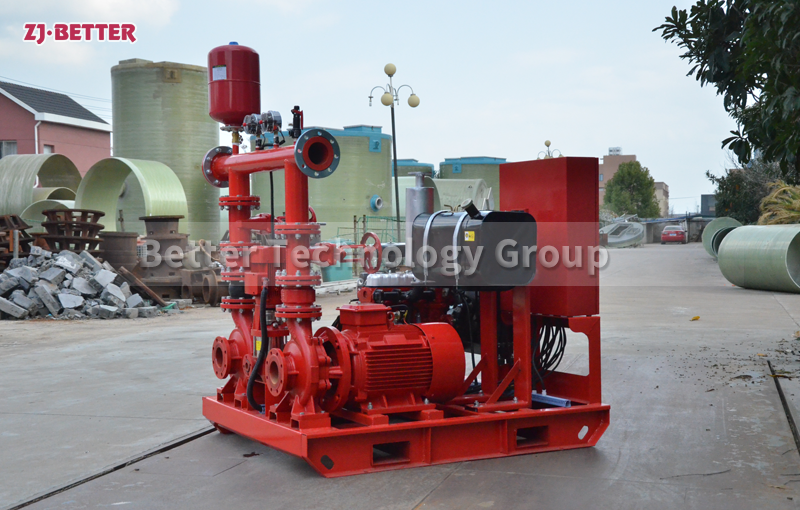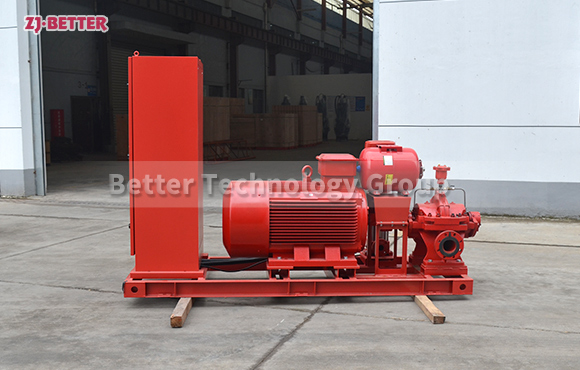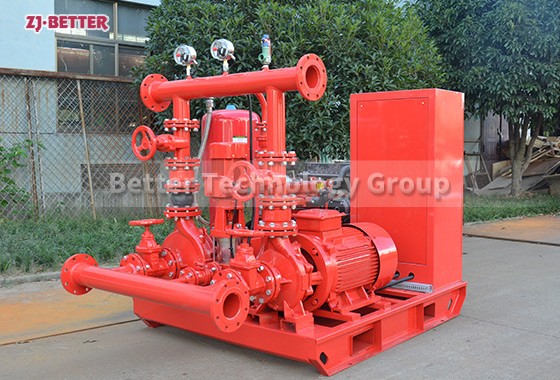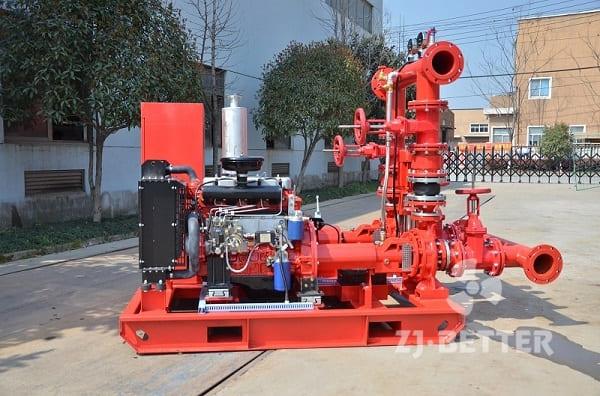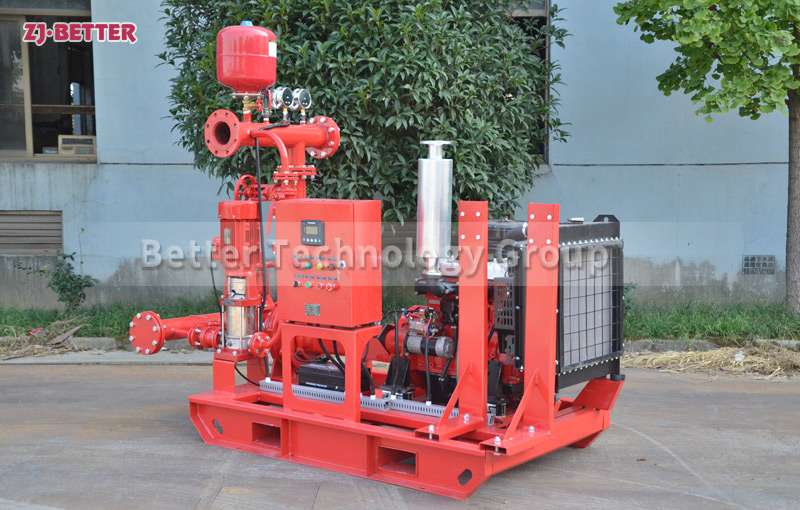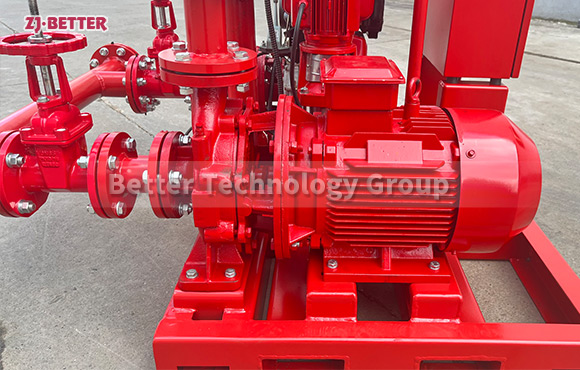EJ fire pump set
An electric main pump,a jockey pump(used in the place where the pump runs entirely through the electric pump)
Electric Pumps:Electric pumps can use vertical in-line pumps,horizontal end-suction pumps,vertical multi-stage pumps,horizontal multi-stage pumps,split casing pumps and so on according to the different flow andhead of customers.
Better Technology Co., Ltd. was founded in 2002. We are locate in HangBu development zone, Quzhou, Zhejiang, with convenient transportation access, covering an area of 20000 square meters,for 15000 square meters workshop. It combines the functions of professional design, development, manufacture and sale of general fluid equipment of high-tech enterprise. Better Technology has own motor factory and control panel factory, can make customized product.
Better Pump has established many sales distributions and agencies in the major provinces in China. Through attending a variety of large scale exhibition, we have developed a broader market.
We are looking forward to forming successful business relationships with new clients around the world in the near future.

